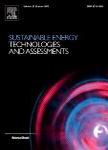版权所有:内蒙古大学图书馆 技术提供:维普资讯• 智图
内蒙古自治区呼和浩特市赛罕区大学西街235号 邮编: 010021

作者机构:Sri Krishna Coll Engn & Technol Dept Elect & Elect Engn Coimbatore 641008 India Kumaraguru Coll Technol Dept Elect & Instrumentat Engn Coimbatore 641049 India KSR Coll Engn Dept Elect & Elect Engn Tiruchengode 637215 India Sri Krishna Coll Engn & Technol Dept Mechatron Engn Coimbatore 641008 India
出 版 物:《SUSTAINABLE ENERGY TECHNOLOGIES AND ASSESSMENTS》 (Sustainable Energy Technol. Assess.)
年 卷 期:2025年第75卷
核心收录:
学科分类:0820[工学-石油与天然气工程] 08[工学] 0807[工学-动力工程及工程热物理]
主 题:Energy management system Renewable energy resources Smart grid Clustering algorithm Robust optimization
摘 要:This study focuses on enhancing Energy Management (EM) by integrating Renewable Energy Resources (RERs) like Wind Energy (WE) and Solar Energy (SE) with grid technology. To analyze the proposed integration technology, an academic campus with interconnected group, cost-responsive demands was considered. These demands can be met using both the grid and RERs;however, EM challenges arise when integrating RERs with the grid. The Evolutionary Energy Preserve Rate Clustering Algorithm (EEPRCA) was utilized to analyze the EM, and the Robust Optimization (RO) strategy was used to predict the unpredictability associated with the power output of RERs, as well as the cost of power produced and energy received from or sold to the main grid. Additionally, Smart Grid (SG) technology was employed to enable bidirectional connectivity between the Energy Management System (EMS) and the main grid, as well as between the EMS and RERs. The EMS plans energy consumption at the start of the working day without SG. However, with SG, the EMS uses bidirectional communication to reschedule utilization based on energy prices and WE and SE generation. Using SG technology leads to a 32% improvement in total utility grid efficiency compared to an EMS without SG. Also, an EMS with SG maximizes the use of available wind and solar RERs, whereas without SG only 55% of these resources are utilized. From these outcomes, it is suggested that the proposed EMS integration strategy can efficiently manage energy, increase the consumption of RERs, and reduce the energy utilization cost for the academic campus.